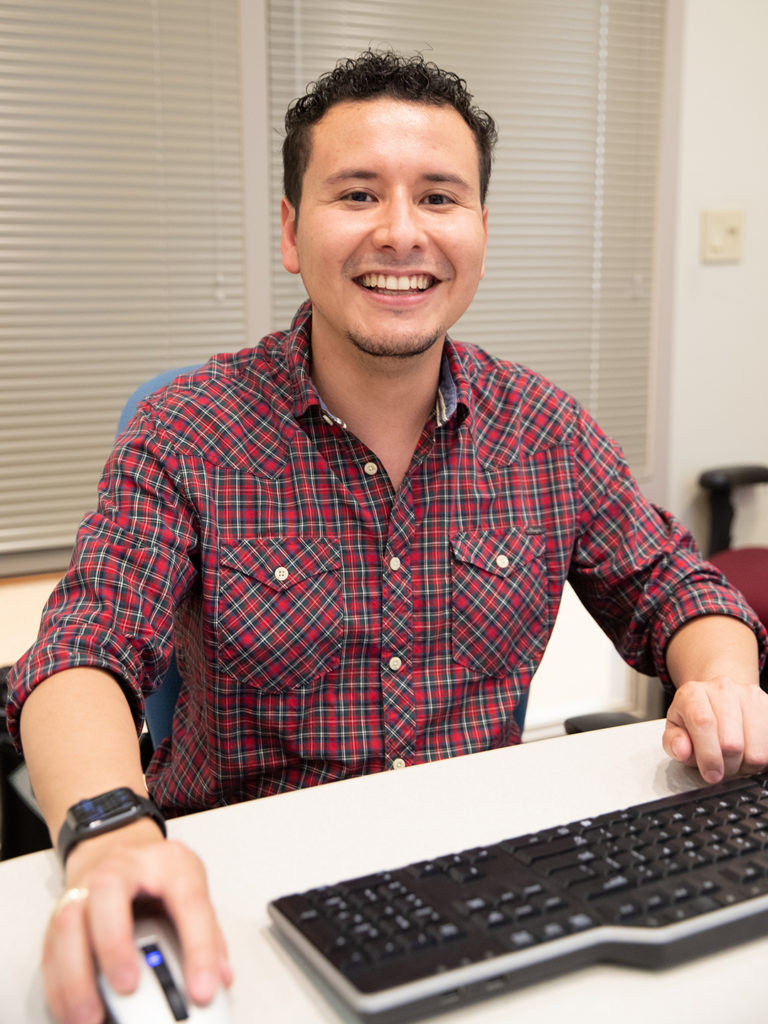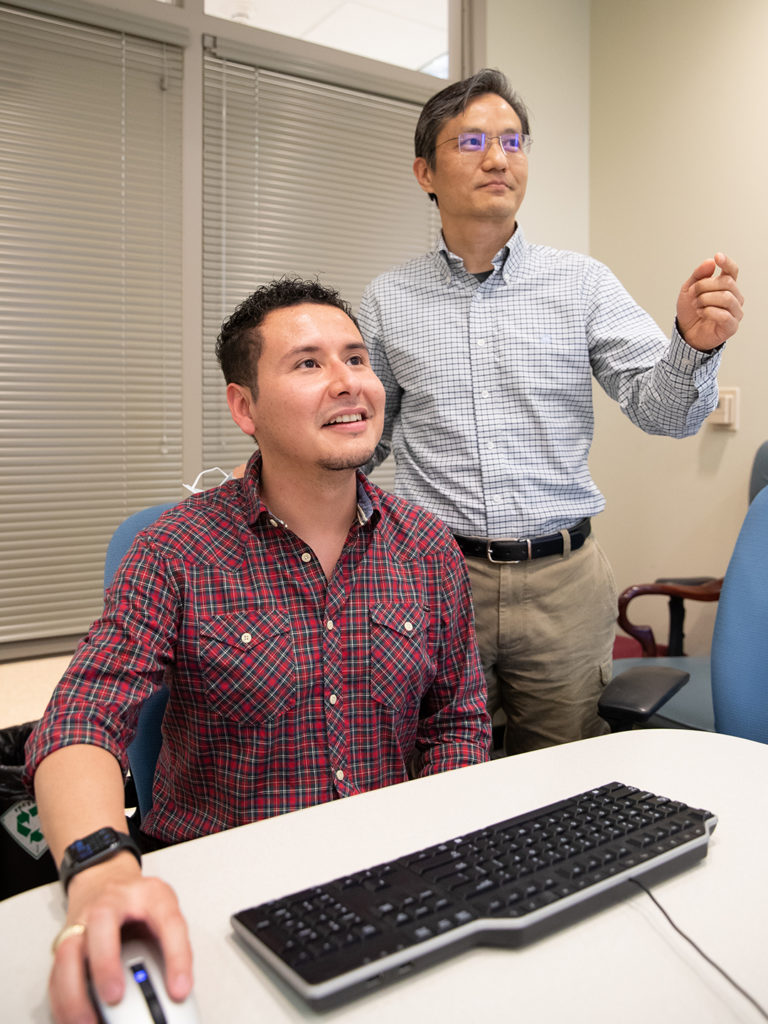CVMBS Graduate Student Receives Fellowship To Study Genetic Drivers Of Breast Cancer In Norway
Story by Megan Myers, CVMBS Communications

With a love for both computers and biology, Texas A&M College of Veterinary Medicine & Biomedical Sciences (CVMBS) graduate student Dr. Daniel Osorio has found the perfect fit to improve the study of cancer through his work in the field of computational biology.
As a recipient of the 2020 Marie Skłodowska-Curie Actions Research Fellowship, Osorio will be heading to the Kuijjer Lab in Oslo, Norway, this April to study the gene regulatory changes driving breast cancer over the next 36 months.
“You can describe cancer using gene expression, or you can describe cancer using the genetic information of the cells,” Osorio said. “If you integrate all that data together, it will give you more hints about which change is inducing the disease.”
Unlike the stereotypical biomedical researcher who uses test tubes and wears lab coats, Osorio conducts his research through a computer. By developing computational tools, he turns plain data into models that construct an in-depth look at the biology behind different diseases.
“My main goal is to develop tools that are broad enough to be applied to anything—studying cancer is just one example,” Osorio said. “I like to develop methods or tools to understand how things happen in the cell using numbers. I want to develop methods that are flexible and powerful enough to detect the biology behind the differences between conditions.”
At the CVMBS, Osorio has worked with Dr. James J. Cai, an associate professor in the CVMBS’ Department of Veterinary Integrative Biosciences (VIBS), to study the regulatory mechanisms of genes at the single-cell level.
The Cai Lab focuses on understanding diverse behaviors of cells by developing computational analytical frameworks to study single-cell multiomics data (different types of data on the same cell-type) and the genetic basis of phenotypic variability in human populations.
“During my Ph.D., I developed a family of tools trying to understand how one gene regulates the other in the cell,” Osorio said. “We let our algorithms model and compare data and then we associate that information with what is known to see how the interactions between genes are related to the specific processes happening in the cell.”
Osorio’s work begins after researchers gather data by breaking tissues down into single cells, which contain nucleotides—the building blocks of DNA—that can be traced back to the genome to identify which genes are being expressed.
Osorio puts this data into numerical matrices, with each number representing how many times each gene is expressed in a specific cell. The matrices are then used to understand how the relationships between the genes change in different cellular states.

“It’s a network, a cloud of connections between genes that we compare to see what the difference is between the sick and healthy groups,” he said.
During his time at Texas A&M, Osorio has published seven peer-reviewed papers and two software packages and has received two awards from the Texas A&M Institute of Data Science. His doctoral dissertation covers the full spectrum of computational methods dealing with single-cell gene expression analysis.
“Daniel is a gifted student with genius-level skills in computational biology,” Cai said. “He is exceptionally skillful working with biological data sets, which are heterogeneous and complex by nature. He also has a good command of statistics and linear algebra and is highly skillful in programming.”
Osorio’s research at Texas A&M will support future projects on specific diseases, including his research in Norway, where he will work on the integration of multiomic and multimodal single-cell data using network approaches.
By finding the differences and causal relationships between genes, scientists will have a better understanding of the genetic cascade that leads to breast cancer and, therefore, will have a better chance at treating it.
“Because cancer is a heterogeneous disease (meaning it can have several causes), we want to identify which cell type is the most important in developing breast cancer, since the breast contains different cell types,” he said. “Then once we identify which cell is the one driving the disease, we can identify the genetic mechanism driving that disease by comparing the genes of the healthy people against the affected individuals.”
Osorio will be moving to Norway this spring to start his new position and research. Having come to Texas from his hometown of Bucaramanga, Colombia, he is no stranger to moving to a new country.
“Moving to another country makes me nervous, but it is also exciting,” he said. “It’s a new experience.”
When he first learned about the Marie Skłodowska-Curie Actions Research Fellowship, which provides full funding for selected researchers who will conduct their work within Europe, Osorio was attracted to the freedom it offered.
“This fellowship is a way to show people that you can get your own funding and complete your own ideas,” he said. “It is very flexible because you can do the research you like and in the way you like it.”
During his time in Norway, Osorio plans to pursue internships at other labs around the world to continue his work and meet more scientists in the field of computational biology and then continue his career either in industry or in his own lab.
###
For more information about the Texas A&M School of Veterinary Medicine & Biomedical Sciences, please visit our website at vetmed.tamu.edu or join us on Facebook, Instagram, and Twitter.
Contact Information: Jennifer Gauntt, Director of VMBS Communications, Texas A&M School of Veterinary Medicine & Biomedical Sciences, jgauntt@cvm.tamu.edu, 979-862-4216


